
The Khalistan movement is a separatist movement seeking to create a homeland for Sikhs by establishing an ethno‐religious sovereign state called Khalistan in the Punjab region. The proposed boundaries of Khalistan vary between different groups; some suggest the entirety of the Indian state of Punjab, while larger claims include Pakistani Punjab and other parts of North India such as Chandigarh, Haryana, and Himachal Pradesh. Shimla and Lahore have been proposed as the capital of Khalistan.
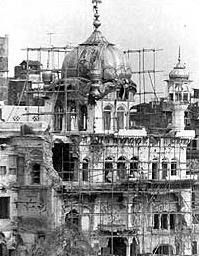
Operation Blue Star was an Indian Armed Forces operation between 1 and 10 June 1984 to remove Damdami Taksal leader Jarnail Singh Bhindranwale and his followers from the buildings of the Golden Temple, the holiest site of Sikhism, in Amritsar, Punjab, India. The decision to launch the operation rested with the Prime Minister of India, then Indira Gandhi, who had already authorized military preparation for a confrontation at the temple complex 18 months prior according to the then-Vice Chief of the Army Staff, S. K. Sinha. In July 1982, Harchand Singh Longowal, the president of the Sikh political party Shiromani Akali Dal, had invited Bhindranwale to take up residence in the Golden Temple to evade arrest by government authorities.

Kanwar Pal Singh Gill was an Indian Police Service (IPS) officer. He served twice as DGP for the state of Punjab, India, where he is credited with having brought the Punjab insurgency under control. While many see him as a hero, there are accusations that he and the forces under his command were responsible for multiple cases of human rights violation "in the name of stamping out terrorism." He was also convicted in a sexual harassment case. Gill retired from the IPS in 1995.
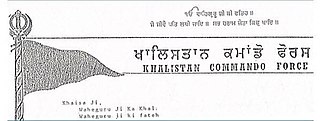
The Khalistan Commando Force (KCF) is a Sikh Khalistani organisation operating in the state of Punjab, India with prominent members based in Canada, United Kingdom and Pakistan. Its objective is the creation of a Sikh independent state of Khalistan through armed struggle. KCF is also responsible for many assassinations in India, including the 1995 assassination of Punjab Chief Minister Beant Singh. It was designated as a banned Terrorist Organisation by the Government of India.

The Insurgency in Punjab, India was an armed campaign by the militants of the Khalistan Movement from the mid-1980s to the mid-1990s. Terrorism, Police brutality and corruption of the authorities were the highlights of the insurgency and the aftermath of the 1984 Sikh Massacre. In the 1980s, the movement had evolved into a militant secessionist movement after the perceived indifference of the Indian state in regards to mutual negotiations. The demand for a separate Sikh state gained momentum after the Indian Army's Operation Blue Star in 1984 aimed to flush out militants hiding in the Golden Temple in Amritsar, a holy site for Sikhs. The operation resulted in the deaths of many militants and civilians, as well as the destruction of the Golden Temple. In the mid-1990s, the insurgency petered out and the Khalistan Movement failed to reach its objective due to multiple reasons including a heavy police crackdown on civilians and militants and extrajudicial killing of Sikhs by Punjab Police and Indian Army. The militancy brought under the control of the law enforcement agencies by 1995.

The Sikh Empire was a state originating in the Indian subcontinent, formed under the leadership of Maharaja Ranjit Singh, who established an empire based in the Punjab. The empire existed from 1799, when Maharaja Ranjit Singh captured Lahore, to 1849, when it was defeated and conquered in the Second Anglo-Sikh War. It was forged on the foundations of the Khalsa from a collection of autonomous Sikh Misl. At its peak in the 19th century, the Empire extended from Gilgit and Tibet in the north to the deserts of Sindh in the south and from the Khyber Pass in the west to the Sutlej in the east as far as Oudh. It was divided into four provinces: Lahore, which became the Sikh capital; Multan; Peshawar; and Kashmir from 1799 to 1849. Religiously diverse, with an estimated population of 4.5 million in 1831, it was the last major region of the Indian subcontinent to be annexed by the British Empire.
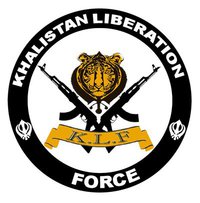
The Khalistan Liberation Force (KLF) is a Khalistani separatist militant organization based in the Indian state of Punjab. Its motive is the creation of a sovereign Sikh state called Khalistan via armed struggle. The KLF is one of the key fighting forces of the Khalistan Movement. It was responsible for assassinations, abductions and military engagements with the Indian Armed Forces during the Insurgency in Punjab. The KLF is listed as a designated terrorist group by India.

Shabeg Singh, PVSM, AVSM, was a Major General who had previously served in the Indian Army but later joined the protest movement of Jarnail Singh Bhindranwale.

Mohyal Brahmins are an Indian sub-caste of Saraswat Brahmins from the Punjab region, who are sometimes referred to as 'Warrior Brahmins'.

Operation Woodrose was a military operation carried out by the Indira Gandhi-led Indian government in the months after Operation Blue Star to "prevent the outbreak of widespread public protest" in the state of Punjab. The government arrested all prominent members of the largest Sikh political party, the Akali Dal, and banned the All India Sikh Students Federation, a large students' union. In addition, the Indian Army conducted operations in the countryside during which thousands of Sikhs, overwhelmingly young men, were detained for interrogation and subsequently tortured. Despite its purported success in controlling the armed insurgency in the Punjab region, the operation was criticized by human-rights groups for the suspension of civil liberties and habeas corpus, resulting in the disappearances of thousands of Sikh men. After the operation, the central government was criticized for using "draconian legislation" to repress a minority community.

The Battle of Saragarhi was a last-stand battle fought before the Tirah Campaign between the British Raj and Afghan tribesmen. On 12 September 1897, an estimated 12,000 – 24,000 Orakzai and Afridi tribesmen were seen near Gogra, at Samana Suk, and around Saragarhi, cutting off Fort Gulistan from Fort Lockhart. The Afghans attacked the outpost of Saragarhi where thousands of them swarmed and surrounded the fort, preparing to assault it. Led by Havildar Ishar Singh, the 21 soldiers in the fort—all of whom were Sikhs—refused to surrender and were wiped out in a last stand. The post was recaptured two days later by another British Indian contingent.
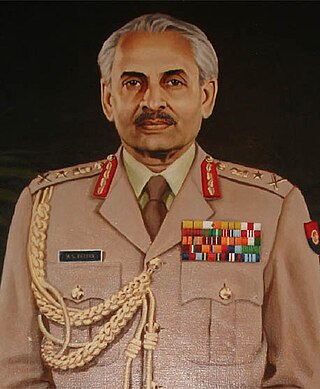
General Arunkumar Shridhar VaidyaPVSM, MVC & Bar, AVSM, ADC was a General Officer in the Indian Army. He served as the 13th Chief of the Army Staff from 1983 to 1986. Following his retirement, he was assassinated by Harjinder Singh Jinda and Sukhdev Singh Sukha in August 1986. This was done in vengeance of Operation Blue Star. General Arun Vaidya commanded this operation.

Harjinder Singh Jinda was a Sikh militant and one of the two assassins of Arun Vaidya. He was responsible for three high-profile assassinations; Arjan Dass, Lalit Maken and Gen. Vaidya. He along with other members of Khalistan Commando Force participated in Indian history's biggest bank robbery of ₹ 57 million from Punjab National Bank, Miller Gunj branch, Ludhiana to finance the militancy for a separate Sikh state of Khalistan.

The Dashmesh Regiment was a militant group, and is part of the Khalistan movement to create a Sikh homeland called Khalistan via armed struggle. The Dashmesh Regiment jathebandi group has claimed responsibility for two of the killings in the 2016–17 Targeted killings in Punjab, India. The origins, leadership, and existence of Dasmesh Regiment is hazy. Some believe it was created by a third-party to put blame of their activities of Jarnail Singh. The Dasmesh Regiment first leader is alleged to be Surinder Singh Gill or Harminder Singh Sandhu the general secretary of the AISSF. Sandhu had admitted to his leadership of the regiment, but also denied it. Some say that it was led by Major General Shabeg Singh. Another belief holds that Dashmesh Regiment was a borad name used by the media to pin responsibility for crimes. It is known that Seetal Singh Mattewal created a militant group in 1990 with the name of Dashmesh Regiment and was its head.

Sukhdev Singh Dhillon, best known as Labh Singh and also known as Sukha Sipahi and General Labh Singh, was a former Punjab police officer turned militant who took command of the Khalistan Commando Force after its first leader, Manbir Singh Chaheru, was arrested in 1986.

The 1984 Anti-Sikh Riots, also known as the 1984 Sikh Massacre, was a series of organised pogroms against Sikhs in India following the assassination of Indira Gandhi by her Sikh bodyguards. Government estimates project that about 2,800 Sikhs were killed in Delhi and 3,350 nationwide, whilst independent sources estimate the number of deaths at about 8,000–17,000.
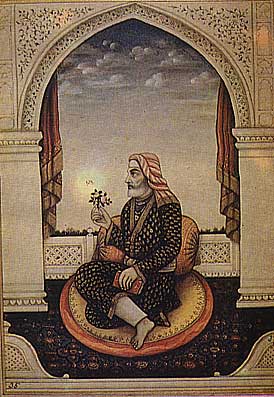
Chopra is a Punjabi Khatri clan and surname. They belonged to the Barah-Ghar / Bahri family-group of the Khatris, which also includes the clans of Dhawan, Kakkar, Kapoor, Khanna, Mehra, Malhotra, Sehgal, Seth, Tandon, Talwar, and Vohra.

Gurjant Singh Budhsinghwala was the third chief of the Khalistan Liberation Force.

Avtar Singh Brahma, also known as "JathedarAvtar Singh Ji Brahma" was one of the main founding figures and the second leader of the Kharku militant organization known as Khalistan Liberation Force founded in 1986. He became known as a Robin Hood figure.


















